The main origin of coffee is South America. What are the coffee producing countries in South America? The three largest coffees in the world
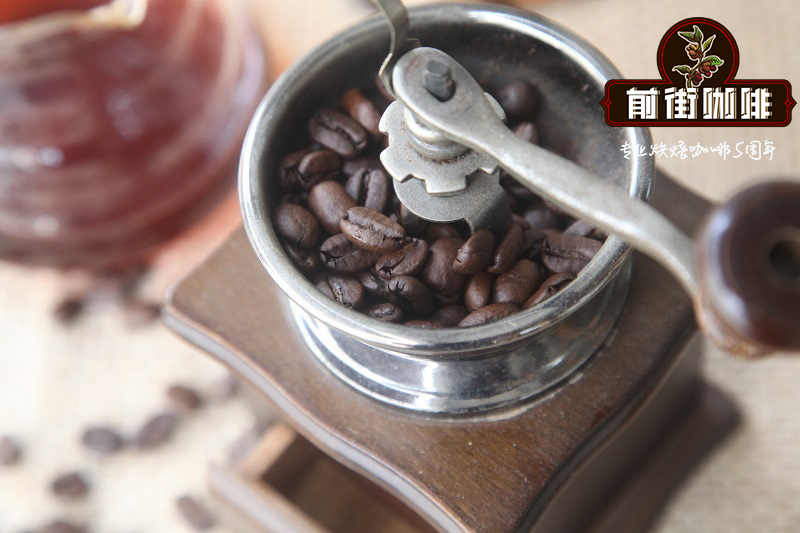
Professional coffee knowledge exchange More coffee bean information Please pay attention to coffee workshop (Weixin Official Accounts cafe_style)
The word flavor is more often used in daily life with taste and taste, that is, English flavor. In coffee tasting, tonality is usually used to describe it. To use a colloquial analogy, in coffee, we also use floral notes, fruit notes, caramel notes to describe flavor.
When a cup of single-serve coffee is placed in front of you, can you really taste it? What do we taste? What do we feel? Just contact coffee white eyes "coffee flavor table", perhaps also the most intuitive feeling_a lot of coffee white drink coffee only coffee flavor, this is very normal.
coffee tasting Advanced Learning Level 1
Many people in contact with coffee, bitter is strong, strong is fragrant, meet such guests we will patiently explain, what flavor, but for a person who never studies coffee, especially just started to contact coffee tasting lovers, many people do not like coffee acid, like very mellow or even strong taste coffee. The key to getting started as a coffee connoisseur can start with balanced American beans or Asian beans.
Simply understand that the origin of coffee beans is mainly divided into:
Africa, Central and South America, Asia and islands
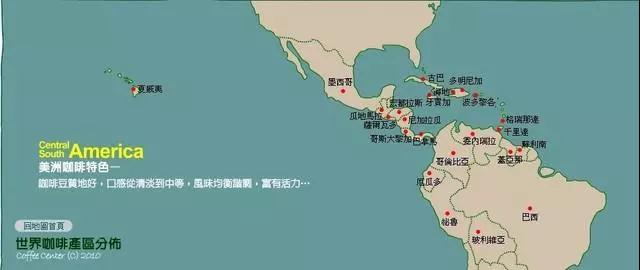
The flavor of Central and South American beans: generally speaking, the flavor is relatively regular. The Brazilian coffee is mellow and full-bodied, while the Costa Rican coffee is gentle and supple, with a blend of sour, sweet and chocolate aromas. Panamanian coffee has strong aromas of citrus, jasmine, peach and nectar, bright and changeable acidity, very similar to Yega Xuefei.
The characteristics of ■ taste: balanced, moderate acidity and mellow taste
In 1721, French naval officer Gabriel Mathieu de Clieu went through difficulties and obstacles to bring the first coffee sapling from Africa to the Latin American island of Martinique, which was the origin of coffee cultivation in Latin America. Because France was under the Bourbon dynasty, Arabica coffee grown in Latin America had another name, bourbon, which is now famous in the coffee industry. Bourbon is now an important branch of coffee in Arabica.
The overall flavor of Latin American coffee is famous for its balance, and all the flavors in Latin American coffee can be found in Latin American coffee. The widespread use of water to treat raw beans is also one of the characteristics of Latin American coffee, good processing also makes its beans larger and more uniform than African coffee, and the defect rate is lower.
Representative:
Brazil: strong on the palate with a chocolate finish.
Columbia: light, well-balanced, nutty, with a sour finish
Jamaica Blue Mountain: sweet and sour balanced, mild, mellow, supple, dark chocolate flavor.
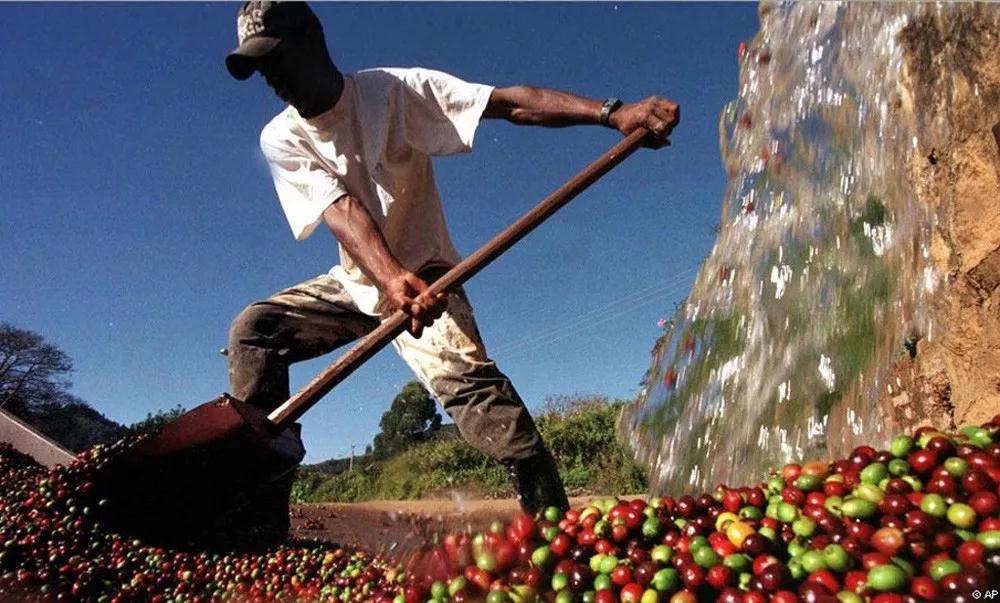
■ Brazil (South America)
Coffee producing areas | Coffee grading system in Brazil and four common processing methods in Brazil
The largest coffee producer, which accounts for 1/3 of the world's coffee consumption, accounts for 1/3 of the world's coffee consumption and has a place in the global coffee market, although Brazil faces several times more natural disasters than other regions. but its acreage is enough to make up for it.
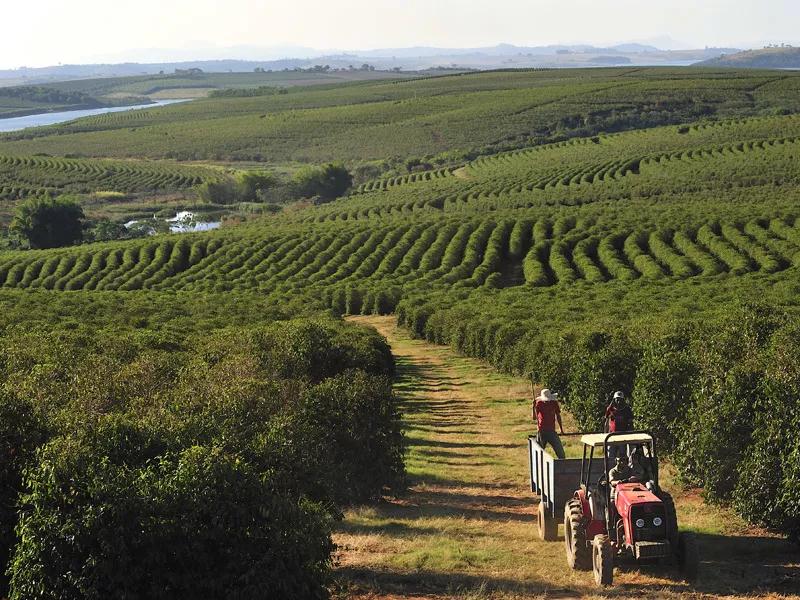
There are many kinds of coffee here, but its industrial policy is large and cheap, so there is not much premium coffee, but it is a good choice for mixing other coffees.
One of the most famous is Sandos Coffee, which tastes mellow and neutral. It can be boiled directly or mixed with other kinds of coffee beans to form a comprehensive coffee. It is also a good choice.
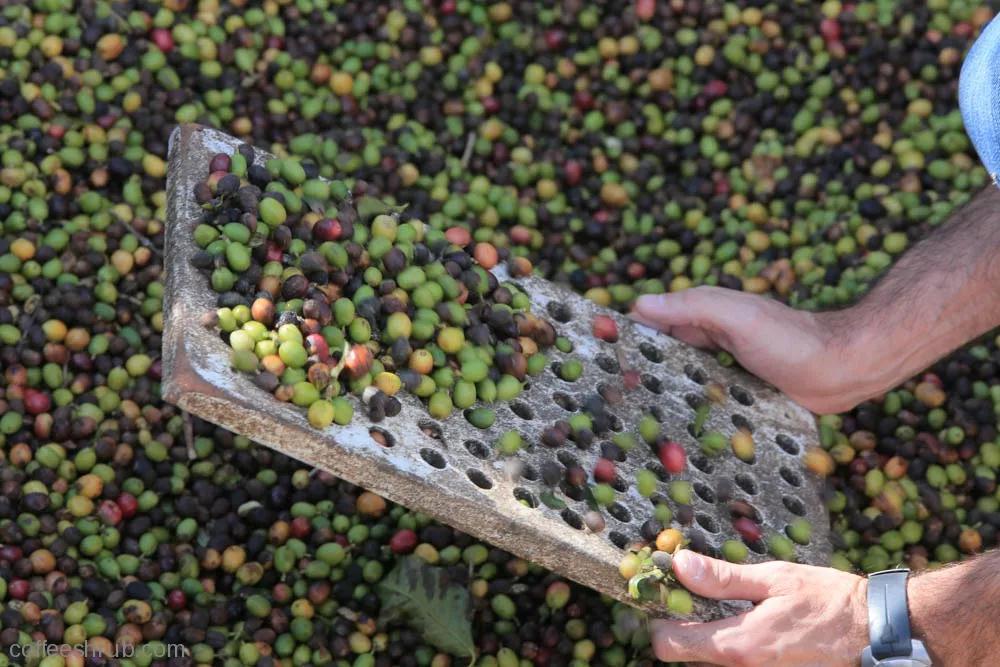
South Minas is the hilly forest area with an altitude of 700m-1200m. It is the earliest production area of Brazilian coffee. Due to the improvement of labor cost, most of them are now harvested mechanically. Other types of Brazilian coffee, such as Rio and Parana, can be produced in large quantities without too much care. Although the taste is rough, it is a kind of cheap coffee.
Because it is distributed all over the country, its solid quality varies, and has its own standard (according to the number of impurities NO.2 -NO.8, according to the size of beans NO.13-NO.19, according to taste divided into six grades). Almost all Arabica varieties are of good quality and stable prices, the most famous being "Brazil Santos", which has been a necessity of blended coffee since ancient times and is familiar to the public. Recently, the rating of "Torma Cup" is also very high.
● Characteristics of taste: mild, sour and bitter, soft fragrance.
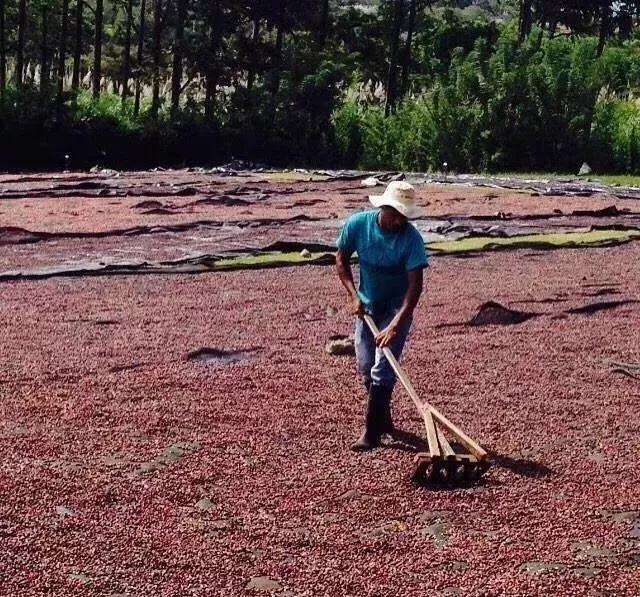
■ Colombia (South America)
Colombia is one of the largest producers of high-quality coffee in the world, a bright pearl in the world coffee map and a coffee land blessed by God. Arabica coffee is grown on a steep slope at an altitude of 800,000m above sea level. It is hand-picked and washed.
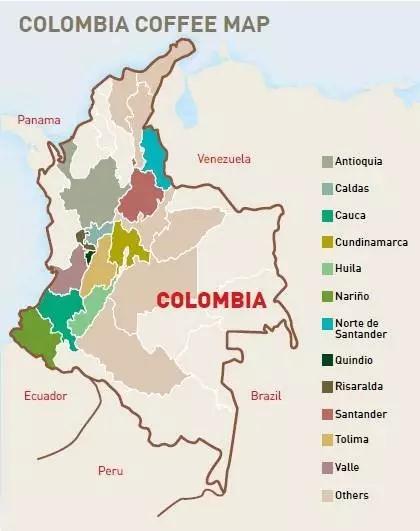
Colombian coffee has a balanced flavor and a smooth taste, just like a gentleman in coffee. He has a wide range of producing areas, such as Medellin, Armenia and Manizales, which are commonly referred to as "MAM".
Colombia's boutique bean producing areas are mainly in the south, more than 1500 meters above sea level, including San Augustin, Huila in Huilan province, Popayan,Cauca in Cauca province, Nari ñ o province, and Tolima province, where products have delicate sour and raspberry aromas, caramel aromas and full sweetness.
■ Honduras (Central America)
Honduras is located in the north of Central America, facing the Caribbean Sea to the north, the Gulf of Fonseca in the Pacific Ocean to the south, Nicaragua and El Salvador to the east and south, and Guatemala to the west, mostly mountains and plateaus. It has a tropical climate, mild temperature and abundant rainfall, so it is an ideal place for coffee growth.
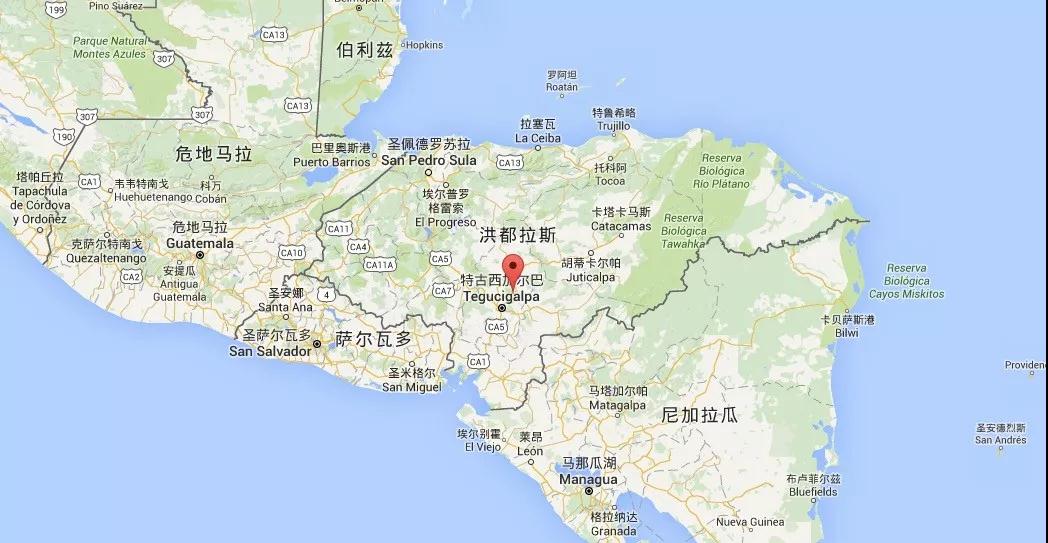
Honduras produces two kinds of coffee of very good quality, which are highly respected by coffee lovers. One is the "Highland Coffee", which is grown at an altitude of 1000 Muhammad 1500 Michael, and the other is the "selected Highland Coffee", which represents the highest level of Honduras, which is grown at an altitude of 1500 Murray 2000 Michael. Most of the Honduran coffee is exported to the United States and Germany.
Twenty years ago in Honduras, almost none of the items such as attention to details, environmental maintenance around the disposal site, investment in treatment equipment, export procedures, logistics and transportation of raw beans could compete with neighboring countries. The quality of raw beans was naturally coarse but not meticulous, and only a few manors or CoE winning batches could be called high-quality products. Since 2007, the situation has improved. Under the leadership of the IHCAFE Coffee Bureau and many far-sighted dry processing plants, Honduras has gradually achieved results in the improvement of the treatment process and the investment in raw bean processing equipment and transportation exports. even though the international market is still low-profile, active bean bakers have invested in Hongguo coffee-producing areas in an attempt to dig out high-quality products.
In terms of output, from 2011 to 2012, Honduran coffee even occupies the leading position in Central America, harvesting about 3 million bags (46kg) of coffee every year. In addition to the volume, IHCAFE and the production association and processing plant that are interested in carrying out a series of projects, hoping to provide international buyers with high quality and delicious Honduran coffee.
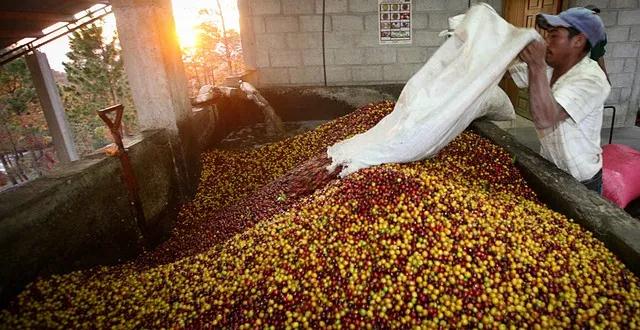
Honduran coffee has a rich and mellow taste, taste is not astringent, not sour, mellow and aroma are very high, quite suitable for beginners. Honduran coffee can lead to multiple levels of flavor depending on the degree of roasting. Moderate baking can maximize the sweetness of beans, while deep baking increases bitterness, but sweetness does not disappear. Generally speaking, medium roasting has the best taste and rich and unique aroma, which is favored by coffee lovers in Honduras.
■ Panama (Central America)
Panamanian caffeine is famous in the world, and the reason is that it is closely related to Panama's unique physical and geographical conditions. Panama is the southernmost country in Central America, bordering the Caribbean Sea to the east, the Pacific Ocean to the west, Costa Rica to the north and Colombia to the south-it is an important isthmus connecting North and South America. Under the influence of such geographical factors, Panama has a complex and changeable microclimate, which also creates a unique flavor of Panamanian coffee.
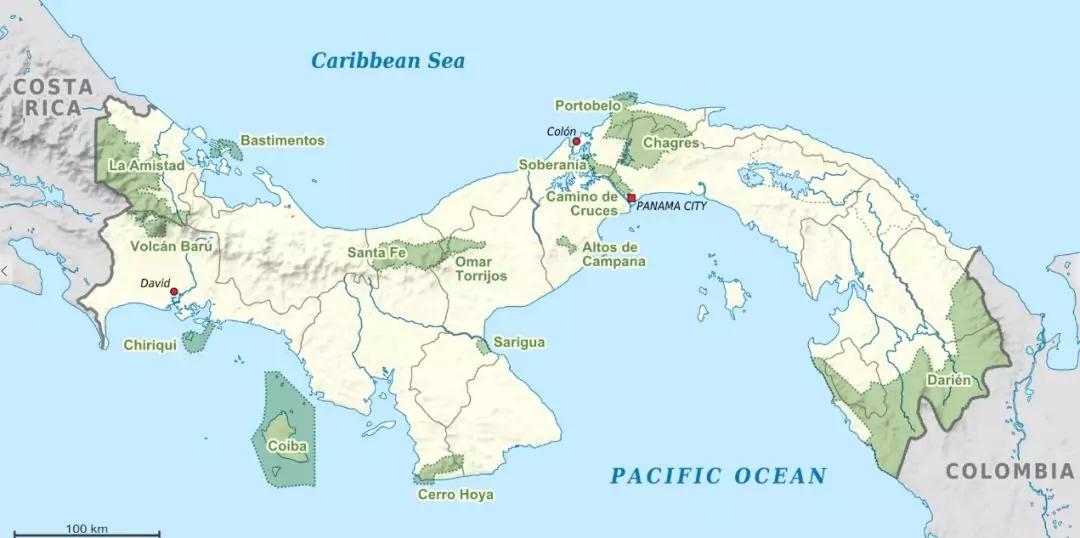
Panama is roughly divided into four producing areas:
Boquete Boquette producing area is 1450 meters above sea level.
The coffee produced in this area is the region with the highest coffee production and the best quality in Panama.
The Volcan Volcano producing area is 2000-3000 m above sea level
The coffee in this producing area is characterized by a mild and balanced flavor, which has gradually attracted the attention of international experts and coffee lovers.
Santa Clara Santa Clara producing area is 1500 meters above sea level
Due to the irrigation of Chorerra Falls and the adjacent Panama Canal, coffee from all over Panama can be easily transported to all parts of the world.
Piedra de Candela Kendra producing area is 1200 meters above sea level
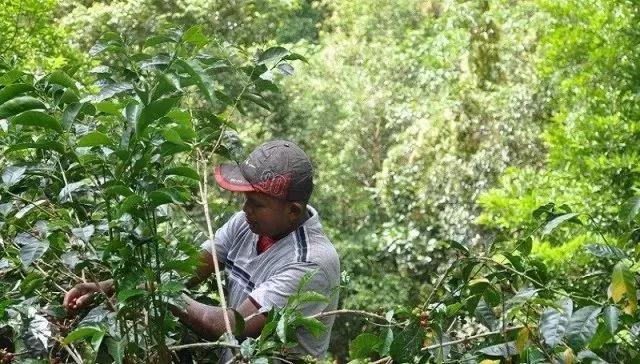
This region is the most promising and has the potential to develop high-quality premium coffee.
One of the highlights of Panama's coffee history is Geisha. Geisha's distinctive character is more intoxicating than the typical flavor of other Panamanian coffees. Under the expectation of everyone, its risk is also particularly high, extremely high mortality rate, low yield, difficult pruning, but also need complicated and costly processing methods, in order to maintain its most primitive flavor.
Geisha's distinctive bright acidity. In his book "Bean Seeker," author Xu Baolin describes it as "useless to call yourself a glutton if you don't know about roses and summer beans in your life", which shows his unquestionable position in the coffee circle. Is Gui Xia's surname Gui? My surname is not Gui, my surname is Gui!
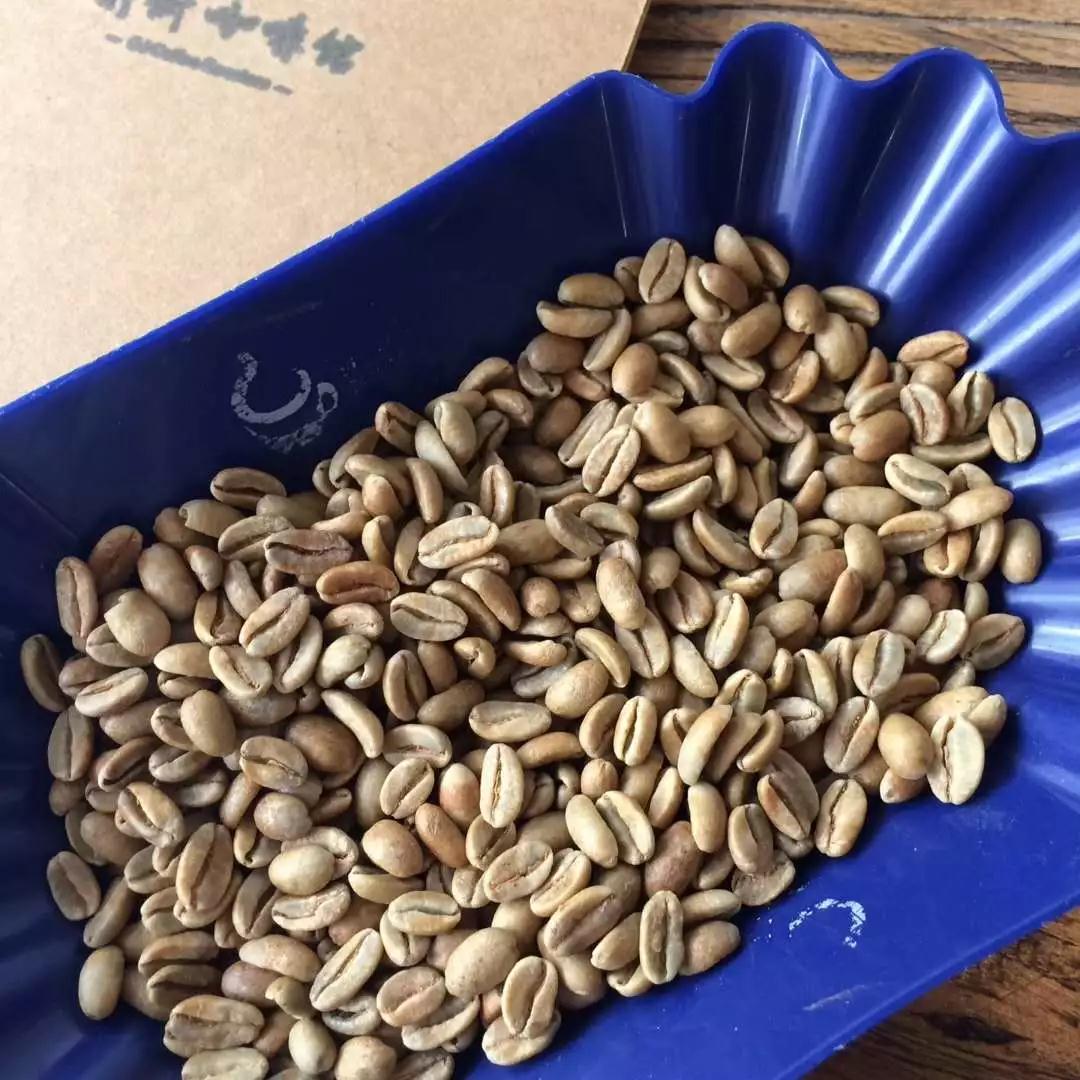
■ Costa Rica
The coffee beans produced at the high latitudes of Costa Rica are famous in the world, full-bodied, mild in taste, but extremely sour. The coffee beans here have been carefully processed, which is why they have high quality coffee.
The famous coffee is produced in the Central Plateau (Central Plateau), where the soil consists of successive layers of volcanic ash and dust.
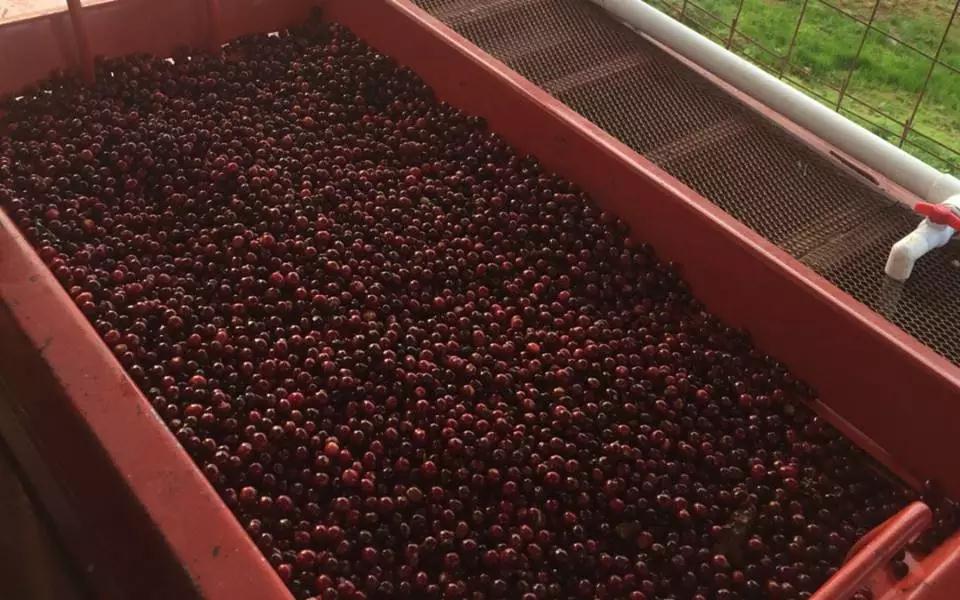
Excellent Costa Rican coffee beans are called "extra hard beans", and their classification criteria are:
Special hard bean SHB (Strictly Hard Beans) is above 1200 meters (3900 feet) above sea level.
Good hard bean GHB (Good hard Beans) 1200m above sea level (3900 m / m)
Medium hard bean MHB (Medium Hard Beans) 1000m above sea level (3300m / 1600ft)
Colombia's most mature treatment [honey-treated] coffee generally has a great balance of sweetness and acidity, and the flavor is generally not as strong as the sun-cured coffee, but it is fresher and mellow. the key to the flavor difference lies in the sugar and acidity of the pectin layer. during exposure, the sugar in the pectin layer becomes more and more concentrated, and these sugars soak into the coffee beans.
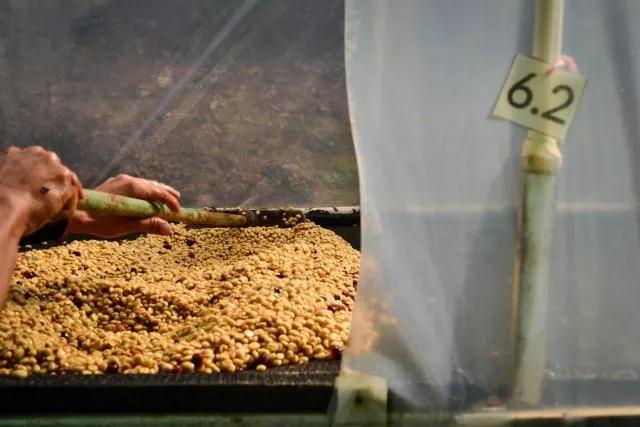
Its three most famous producing areas are Tarasu, south of the Costa Rican capital SanJose, as well as the producing areas of the Central Valley and the western valley. Tanning is a very traditional practice, which uses the least resources, but because there are too many uncontrollable factors, it is very difficult to do well.
Characteristics of ●: chocolate and nutty, medium acidity and mellow, Brin, orange, peach, grapefruit, juice, natural sweetness, meticulous taste, overall perfect and balanced.
The beans grown in Costa Rica are Caturra, Catuai and Villa Sarchi, as well as a small number of Kenyan species SL28, Obata and so on.
Villasarchi Vera Saatchi\ Vera Saatchi
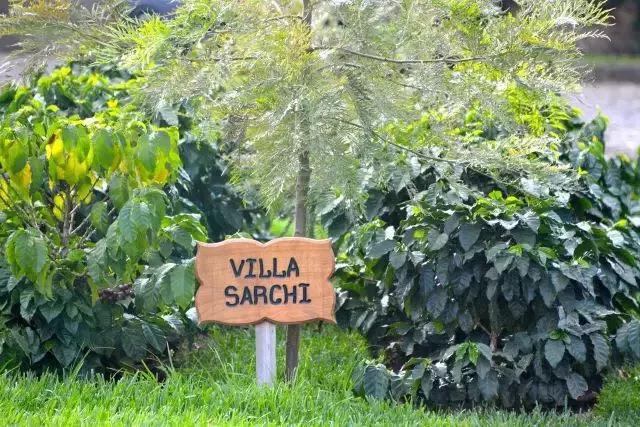
Produced in Costa Rica, is a variety of Tippica, like Tippica, the angle between the branch and trunk is 60 degrees, and the leaves are bronze.
■ Guatemala
The characteristics of ● taste: bitter and fragrant, good taste
The central region of Guatemala is home to world-famous coffee with excellent flavor. Most of the coffee beans here have charcoal flavor and cocoa flavor, but their acidity is slightly stronger. Slightly sour, mellow and smooth, it is the best material for mixed coffee. The classification is divided into seven grades according to the elevation. The higher the origin, the more mellow the coffee beans are, while the coffee beans from the lower areas are of lower quality.
More famous is Incht Manor [El injento], the world's top coffee house. Incht Manor is located on the Vivette South Fruit Plateau, a famous producing area of Guatemala. Since the Aguirre family began to grow coffee in 1900, the name of the manor "Injerto" is taken from the name of a local fruit, Incht Manor.
[Pakamara]: a variety of coffee that is a hybrid of Pacas Pacas (a sudden variant of the bourbon species) and giant bean Maragogype (elephant bean) found in El Salvador in the 1950s.
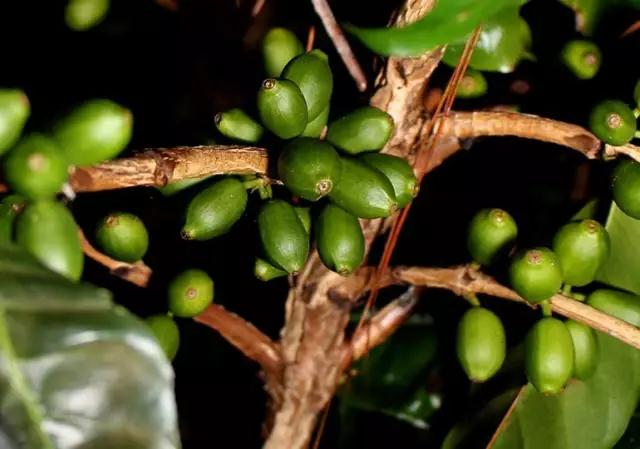
■ Peru Pero
Peruvian coffee will have obvious chocolate, cream and herbal flavors, the main beans are iron pickup, bourbon and Kaduai.
Main producing areas of Peru
In the north, nearly 70% of Peru's coffee comes from here, mainly organically grown.
In the middle, the region is located at a high altitude (1200murmur2000m), and most of the coffee is grown organically, with elegant and supple acidity and a well-structured taste.
Peruvian coffee is grown in a planned way, which has greatly increased coffee production. Its rich acidity and mellow smoothness are its most prominent features. Peruvian coffee has a soft sour taste, medium texture, good taste and aroma, and is an indispensable ingredient in the production of comprehensive coffee. High-quality Peruvian coffee has a strong aroma, smooth, layered, rich and sweet, with soft acidity and rich dark chocolate beans.
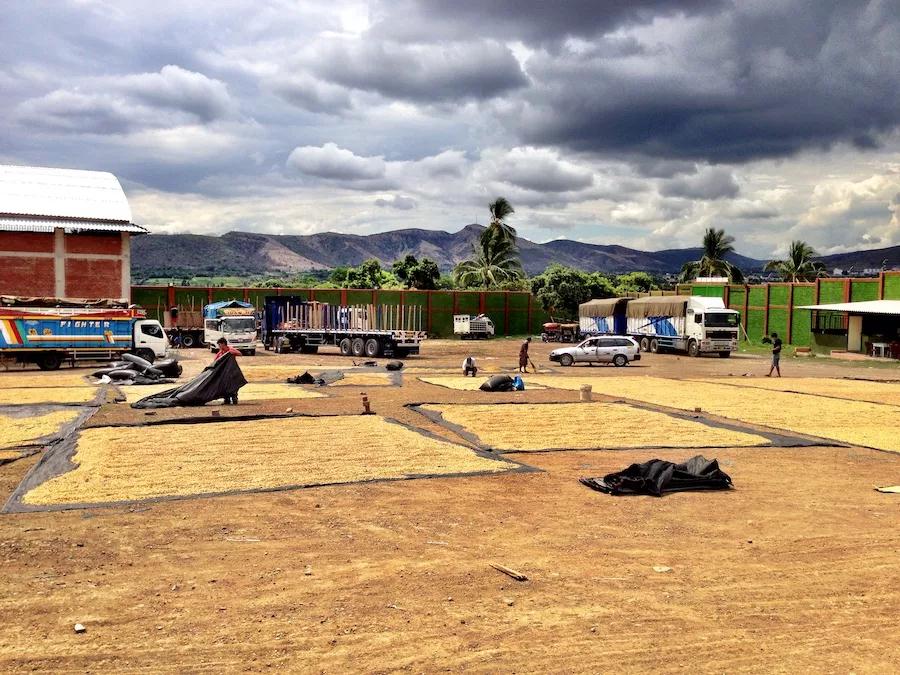
■ Ecuador Ecuador
The ever-changing ecosystem has created Ecuador's rich coffee flavor, but most of them still show classic South American characteristics, such as medium mellow thickness, high acidity and high sweetness. Most of the coffee is grown organically, and coffee at high altitudes is of good quality.
Main producing areas of Ecuador
The province of Manabi, which is dry near the sea and at an altitude of 300m, is Ecuador's largest coffee-producing region, and its Arabica accounts for the country's average production.
The province of Zamora Chinchipe (Zamora chinchipe), located in the southeast of Ecuador at a high altitude of 1000murm 1800m, mainly produces washed Arabica with a bright, sweet and berry flavor.
In the provinces of Loja and El oro, 20% of the country's Arabica comes from this region, and coffee beans are almost all sun-treated because of the dry climate.
■ Blue Mountains of Jamaica
When it comes to drinking coffee, many friends will immediately say, "give me a cup of Blue Mountain." Jamaican Blue Mountain Coffee has a high reputation, low production and a long history. It can be said that even if you have never tasted boutique coffee, you have heard of Blue Mountain Coffee.
Three major producing areas of Blue Mountain Coffee
The Blue Mountain area is a small area with a planting area of only 6000 hectares, and it is impossible to grow all the coffee marked "Blue Mountain" there. Another 12000 hectares are used to grow two other types of coffee (non-Blue Mountain Coffee): Alpine Top Coffee and Jamaican Coffee.
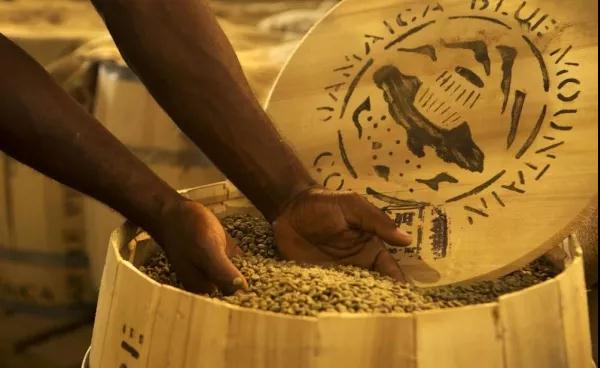
According to the bean size, the grade is divided into NO.1, NO.2, NO.3 and hand-selected PB, in which NO.1 's basic standard of Lanshan raw beans is beans with more than 17 mesh, defect rate less than 3%, moisture content about 13%, and so on. In addition, so far, Lanshan Coffee raw beans are treated only by water washing, and there are no sun and other treatments.
Flavor of Blue Mountain Coffee:
The taste is very clean, the taste is full-bodied and mellow, and the sweet, sour and bitter taste of coffee is perfect, with no bitterness at all, only a moderate and perfect sour taste and a long-lasting fruit taste.
Bolivia (Bolivia)
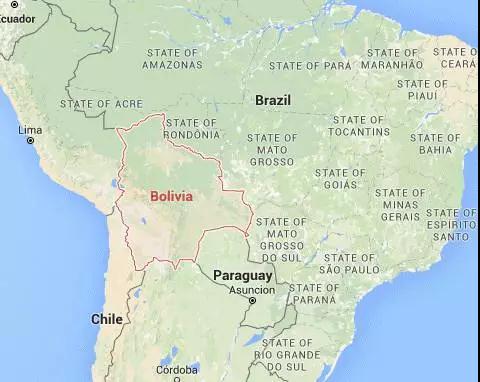
In Bolivia, the development of its coffee is limited by transportation difficulties, but the quality is not poor at all. Bolivian beans are of good quality, with obvious fruit tone and sometimes floral fragrance.
Especially when Miki Suzuki of Japan won the world runner-up with Bolivia's geisha at the WBC (World barista Competition) held in Seoul in 2017, Bolivia, a coffee producer, became even better known. Most of the Bolivian beans are iron pickup, Kaddura and Kaduai, and they are grown organically almost everywhere.
Bolivia has a variety of topography; its capital, La Paz, is 3500 meters above sea level in the western part of the country. High altitude brings great advantages to coffee cultivation, but the Bolivian coffee industry is still weak, with an annual output of only 150000 sacks.
Farmers in Bolivia mainly use water washing to treat raw beans, and some occasionally use sun or honey treatment. It is worth mentioning that because Bolivia has a colder climate than other coffee-producing countries, many farmers use machines to dry rather than sun-dry.
Flavor expression
Coffee produced at high altitudes in Bolivia usually has a deep and full sweetness, soft citrus acidity and black fruit and berry flavors. Coffee produced at relatively low altitudes shows a balanced taste, excellent chocolate sweetness, soft acidity, and malt and dried fruit flavors.
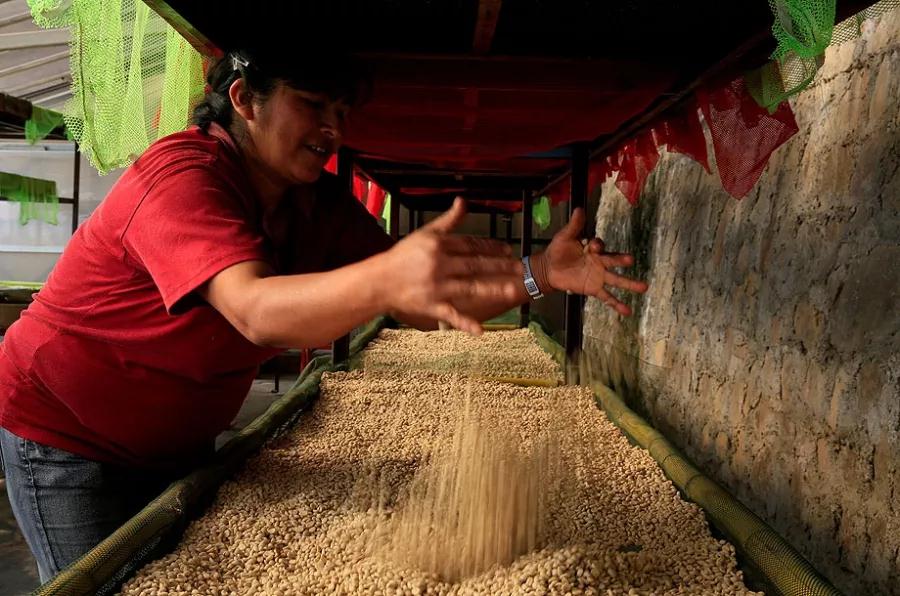
Probably know the characteristics of jelly beans, drinking coffee is like tasting wine, through
Three steps: smell, taste and aftertaste
You can pay extra attention to whether the "body" or "coffee body" of coffee is full, heavy, light, light as water, or as thick as syrup. The acidity of coffee is dull, lively, or strong. Finally, you can consider the aftertaste of the coffee and the overall complexity.
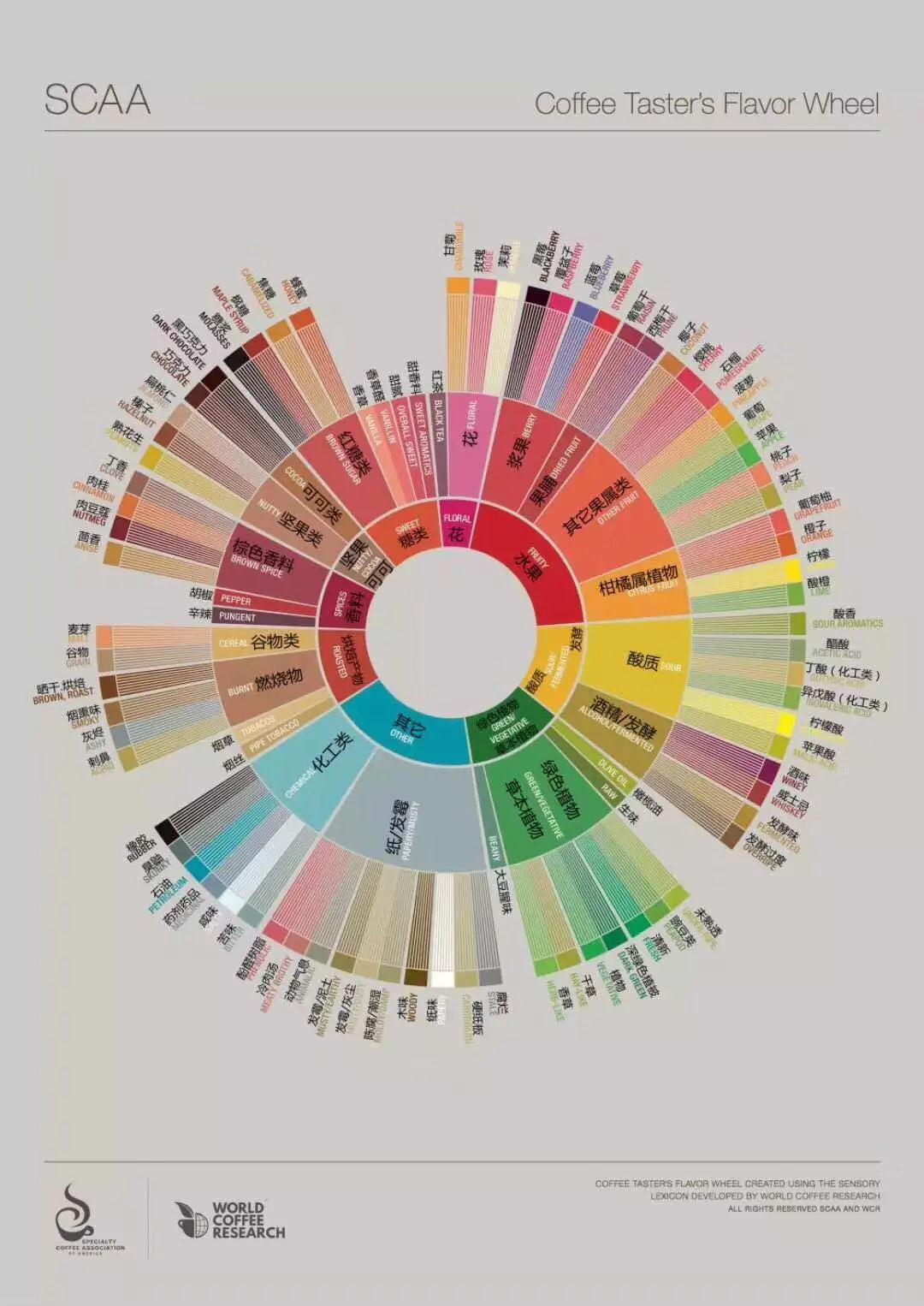
Important Notice :
前街咖啡 FrontStreet Coffee has moved to new addredd:
FrontStreet Coffee Address: 315,Donghua East Road,GuangZhou
Tel:020 38364473
- Prev

Where does the coffee come from? What are the beans in the three major coffee producing areas? What are the characteristics of each?
Professional coffee knowledge exchange more coffee bean information please pay attention to the coffee workshop (Wechat official account cafe_style) coffee producing areas? What are the beans in the three major coffee producing areas? What are the characteristics of each? In such a big circle of the earth, coffee growing places are also distributed all over the world. As long as the geology and climate match, there may be dense coffee producing areas, but different locations,
- Next
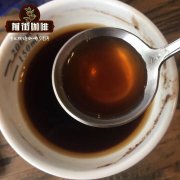
Introduction to the characteristics of Angolan coffee _ is the price of Angolan coffee expensive _ what is the taste of Angolan coffee
For more information on coffee beans, please follow the coffee workshop (Wechat official account cafe_style), once a big coffee producer. In the mid-1970s, Angola (Angola) exported 3.5 million bags of coffee a year, 98 per cent of which was Roberts (which is probably the best Robbins coffee in Africa). In 1990, total production dropped to 200000.
Related
- Detailed explanation of Jadeite planting Land in Panamanian Jadeite Manor introduction to the grading system of Jadeite competitive bidding, Red bid, Green bid and Rose Summer
- Story of Coffee planting in Brenka region of Costa Rica Stonehenge Manor anaerobic heavy honey treatment of flavor mouth
- What's on the barrel of Blue Mountain Coffee beans?
- Can American coffee also pull flowers? How to use hot American style to pull out a good-looking pattern?
- Can you make a cold extract with coffee beans? What is the right proportion for cold-extracted coffee formula?
- Indonesian PWN Gold Mandrine Coffee Origin Features Flavor How to Chong? Mandolin coffee is American.
- A brief introduction to the flavor characteristics of Brazilian yellow bourbon coffee beans
- What is the effect of different water quality on the flavor of cold-extracted coffee? What kind of water is best for brewing coffee?
- Why do you think of Rose Summer whenever you mention Panamanian coffee?
- Introduction to the characteristics of authentic blue mountain coffee bean producing areas? What is the CIB Coffee Authority in Jamaica?

